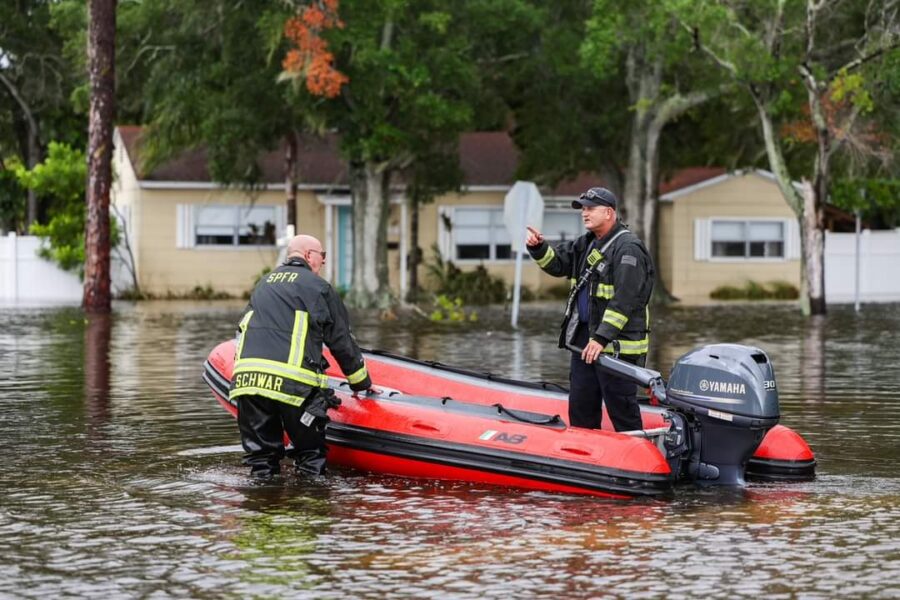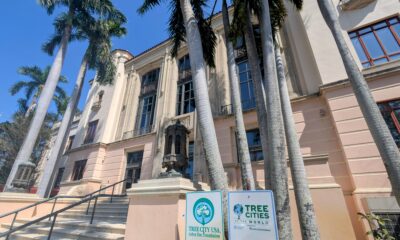How local partnerships will address increasing flooding risks

As a peninsula on a peninsula, St. Petersburg is uniquely susceptible to sea level rise and flooding; however, it is also home to organizations dedicated to mitigating associated risks.
Pat Mack, founder and CEO of PVM, announced his company is now partnering with the University of South Florida’s Florida Flood Hub for Research and Innovation. PVM is a digital services company that “unlocks the power of data for good.”
The Flood Hub, led by Dr. Thomas Frazer, seeks to improve forecasting to inform science-based policy, planning and management. Collaboration is just an elevator away as both organizations operate from St. Petersburg’s Maritime and Defense Technology Hub.
“In many instances, we (PVM) would be constrained by legacy infrastructure,” Mack said. “In this case … we get to be really creative and innovative and bring in the best technology from day one to solve this challenge.”
The Flood Hub opened in January 2022 as part of a $600 million statewide initiative to improve environmental resiliency. USF’s College of Marine Science on the St. Petersburg campus oversees operations.
Conveying accessible and compelling information to stakeholders is critical to the Flood Hub’s efforts. PVM has supported data-driven missions for organizations like the U.S. Department of Homeland Security and the Centers for Disease Control and Prevention since 2011.
As a self-described computer science nerd, Mack will now use his data analytics expertise to bolster flood-related information management and dissemination. PVM will also help organize statewide sea level rise analysis, rainfall projections and flood vulnerability assessments.
Mack said that regardless of the debate surrounding climate change and its immediate impacts, weather patterns have changed in the city and state. “So, I’m really passionate about this mission,” said the St. Pete native.
“I’m not looking at getting this right for tomorrow or this year,” Mack added. “I’m looking at solving this challenge for my grandkids and the future generations that will have the privilege of calling St. Petersburg home. This is incredibly important to us.”

Pat Mack, CEO of St. Petersburg-based PVM, Photo by Mark Parker.
The partners will gather and analyze global data to support Florida’s 67 counties. Resiliency is key for the Flood Hub, as is ensuring that information remains accessible through any weather event.
While the Maritime and Defense Technology Hub is a secure facility, Mack said the organizations would consider building a data center. For now, he will look to “leverage new technology” and store some information in the cloud and on the USF campus.
Mack, a St. Pete native, retired as a commander after 25 years with the U.S. Navy. He then launched PVM, and those two career paths underscore his belief in the power of public-private partnerships.
“We get to bring innovation and disruptive technology in a way that if the government were to try and build it themselves, it would be time and cost-prohibitive,” he said. “The global investment in IT (information technology) is many orders of magnitude greater than the public sector.”
Mack explained that PVM’s focus is building upon commercially available technology for the public sector. He said having boots on the ground in the community aids those efforts.
He also believes USF’s marine science pedigree and institutional knowledge are irreplicable. Mack said partnering with PVM would allow the College of Marine Science and Flood Hub to focus on “what they’re absolutely domain experts at.”
PVM is also helping disseminate the City of St. Petersburg’s data. While that aids emergency operations amid increased flooding events, Mack said it would also inform permitting and zoning policy.
“What PVM is looking to do … is provide all of the IT services and infrastructure so those world-class marine science researchers at USF can collect the data, share the data and then construct forecast models that can be used to inform all the stakeholders,” he said.
“That, we think, is going to look like a website or some kind of portal where you log in, enter the location you’re interested in and then get a risk-adjusted assessment of any potential flood damage.”







